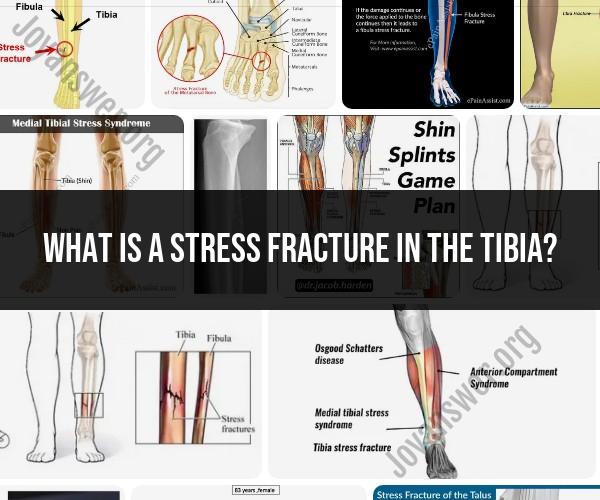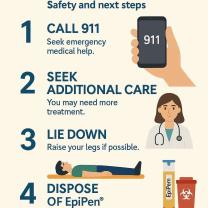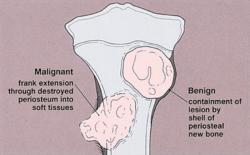What is a stress fracture in the tibia?
A tibial stress fracture is a small crack or hairline fracture in the tibia, which is the larger of the two bones in the lower leg. Stress fractures are typically caused by repetitive stress and overuse of the leg, often as a result of activities that involve running, jumping, or excessive impact on the legs.
Here are some key points about tibial stress fractures:
Causes:
- Repetitive Stress: The most common cause of tibial stress fractures is repetitive stress or overuse of the leg. This can result from activities like running, jogging, dancing, or participating in sports that involve running and jumping.
- Sudden Increase in Activity: Rapidly increasing the intensity, duration, or frequency of physical activity, especially in athletes, can increase the risk of stress fractures.
- Inadequate Rest: Insufficient rest between training sessions or activities can prevent the bones from properly healing and make them more susceptible to stress fractures.
- Footwear and Surface: Improper footwear, worn-out shoes, or training on hard or uneven surfaces can contribute to the development of stress fractures.
Symptoms:
- Pain: The most common symptom of a tibial stress fracture is localized pain along the shinbone (tibia). The pain may start as mild and gradually become more intense with continued activity.
- Swelling: Some individuals may experience swelling in the affected area.
- Tenderness: The area around the fracture site may be tender to the touch.
- Pain During Activity: Pain typically worsens during weight-bearing activities and may subside with rest.
Treatment:
- Rest: Rest is a key component of treating tibial stress fractures. It allows the bone time to heal. Depending on the severity of the fracture, rest may involve avoiding weight-bearing activities for several weeks to a few months.
- Immobilization: In some cases, a brace, cast, or walking boot may be prescribed to immobilize the leg and reduce stress on the tibia.
- Gradual Return to Activity: After a period of rest and healing, a gradual return to physical activity under the guidance of a healthcare provider or physical therapist may be recommended.
- Pain Management: Over-the-counter pain medications may be used to manage pain and inflammation.
- Address Underlying Causes: Identifying and addressing the underlying factors that contributed to the stress fracture, such as training errors or improper footwear, can help prevent future injuries.
It's important to seek medical attention if you suspect a tibial stress fracture, as untreated stress fractures can lead to more severe fractures or complications. A healthcare provider can diagnose the fracture through physical examination, imaging (such as X-rays or MRI), and recommend an appropriate treatment plan based on the severity of the injury.
1. Understanding Tibia Stress Fractures: Causes and Symptoms
A tibial stress fracture is a small crack in the tibia, or shinbone. It is caused by repetitive stress on the bone, such as from running, jumping, or marching. Stress fractures are common in athletes, but they can also occur in people who are new to exercise or who have recently increased the intensity or duration of their workouts.
Symptoms of a tibial stress fracture include:
- Pain in the shinbone that worsens with activity
- Tenderness and swelling around the pain area
- Bruising
- Difficulty walking or running
If you experience any of these symptoms, it is important to see a doctor so that they can diagnose the problem and recommend appropriate treatment.
2. Diagnosis and Treatment Options for Tibia Stress Fractures
To diagnose a tibial stress fracture, your doctor will ask about your symptoms and medical history. They will also perform a physical examination and may order an X-ray or MRI scan to confirm the diagnosis.
Treatment for a tibial stress fracture depends on the severity of the fracture. In most cases, treatment involves rest and physical therapy. You may also need to wear a splint or cast to support your leg. In severe cases, surgery may be necessary.
3. Prevention Strategies to Avoid Tibia Stress Fractures
There are a number of things you can do to prevent tibial stress fractures:
- Gradually increase the intensity and duration of your workouts.
- Warm up before exercising and cool down afterwards.
- Wear supportive shoes.
- Listen to your body and rest when you are tired or in pain.
- Get enough calcium and vitamin D.
- Maintain a healthy weight.
If you are new to exercise, it is important to start slowly and gradually increase the intensity and duration of your workouts over time. This will help to reduce the risk of overuse injuries.
It is also important to warm up before exercising and cool down afterwards. A warm-up helps to prepare your body for exercise by increasing your heart rate and blood flow to your muscles. A cool-down helps to reduce your heart rate and blood flow and to prevent muscle soreness.
Wearing supportive shoes can also help to prevent tibial stress fractures. Look for shoes that fit well and provide good arch support.
Finally, it is important to listen to your body and rest when you are tired or in pain. If you experience pain in your shinbone, stop exercising and rest. If the pain persists, see a doctor.
By following these prevention strategies, you can reduce your risk of developing a tibial stress fracture.













